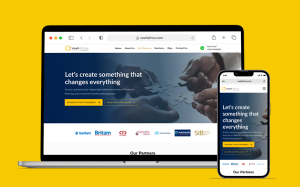After five years in the digital marketing scene, we’ve seen businesses pour heart and wallet into social media marketing campaigns without properly tracking their results. They launch flashy Facebook ads or post content consistently on Twitter without setting clear goals or benchmarking analytics. Then a year goes by, and they have no idea whether their efforts have achieved anything worthwhile!
Don’t let that be YOU!
Because, let’s be real, posting memes and cat videos is fun, but if you’re not tracking the impact, you’re basically lighting a match in the wind and hoping for a wildfire. We’ve learned the importance of measuring social media marketing results through proper goal-setting, metric tracking, analytics monitoring, and optimization. When you take the time to follow a measurement framework, you gain incredibly valuable insights that help you focus your strategy and maximize your marketing ROI.
Think of it like navigating the Maasai Mara: without a map and keen observation, you might stumble upon breathtaking landscapes, but finding the watering hole where your customers gather? Not likely. Metrics are your map, guiding you to the treasure trove of insights that fuel smarter strategies and impactful campaigns.
Set S.M.A.R.T. Goals for Each Campaign
We once worked with a client who wanted to “boost visibility and engagement” with a new Facebook page. But those goals were way too vague to benchmark results against. That’s why I always recommend setting S.M.A.R.T. goals when kicking off any social media marketing initiative:
- Specific: Set precise goals like “Gain 5,000 new Twitter followers” or “Generate 300 email newsletter signups.”
- Measurable: Choose quantitative goals that have concrete metrics to track progress.
- Achievable: Make sure your goals are realistic within budget, resources, and timeline constraints.
- Relevant: Align goals directly with overarching business objectives.
- Time-bound: Give goals a specific timeframe, like 30 days or by the end of Q1.
S.M.A.R.T. goal-setting creates a blueprint for the metrics and analytics you need to benchmark and measure as your campaigns unfold.
Key Performance Indicators to Track
Once S.M.A.R.T. goals are established, identify the right Key Performance Indicators (KPIs) to monitor that will indicate progress and results. Here are some of the essential metrics we track for social media marketing:
- Reach and Impressions
Reach shows how many unique accounts your content was displayed to through shares, ads, etc., while impressions count total views. These indicate how well your message is spreading. - Engagement Rate
Engagement looks at likes, comments, clicks, shares, and other actions people take on your content. The engagement rate compares that to reach and impressions. We track engagement rates across every channel as a core KPI. - Clicks and Traffic
Click metrics reveal how many visits you’re driving to your website or other destinations. - Conversions and Sales
Marketing’s ultimate goal is driving conversions and sales. Social media tracking tools connect your content to downstream conversions. - Return on Investment (ROI)
Calculating marketing ROI means comparing investment to return. With conversion metrics, we can quantify leads and sales from social marketing initiatives.
Utilize Analytics Platforms
Monitoring this array of metrics requires tapping into robust analytics tools. Each social media platform offers in-depth native analytics:
- Facebook Insights: Tracks followers, reach, engagement, video views, page visits, and more. Connects content to website conversions.
- Twitter Analytics: Monitors tweet impressions, engagement, clicks, followers, locations, and user demographics.
- Instagram Insights: Follower count, impressions, reach, engagement, and demographic data. Integrates with Facebook metrics.
- YouTube Analytics: Views, watch time, traffic sources, demographics, and popularity metrics. Provides deep audience understanding.
- LinkedIn Analytics: Followers, content reach/engagement, visitor profiles, lead generation metrics, company page visits, and more.
We instruct clients on accessing these platforms and send weekly reports highlighting important metric trends and changes. This allows us to spot what content and tactics are moving the needle, so we can refine efforts to maximize results. Without analytics, you’re flying blind.
Compare Metrics to Goals
After a campaign period, it’s time for reflection by comparing metrics back to those initial S.M.A.R.T. goals:
- Did we hit the targets for reach, engagement, and conversions that we wanted to achieve?
- What goals lagged behind and what exceeded expectations?
- How do results align with business objectives like brand awareness, lead generation, or sales?
Social media marketing takes regular analysis and adaptation.
Continual Testing and Optimization
There’s something we always tell our clients: Measurement isn’t just about looking back—it also informs how you adjust going forward.
- Test different content formats: We A/B test visual posts vs. captions vs. videos to see what content style best engages each audience.
- Experiment with messaging: Maybe hype-focused copy works better than educational content or vice versa. Measure engagement using different approaches.
- Evaluate timing: We analyze ideal posting times and frequencies—sharing early mornings vs. afternoons vs. evenings, for example.
- Assess individual platforms: Compare the traction different networks drive and shift budgets to the highest-performing channels.
- Attribute impact: Track UTM campaign tags to connect website actions to specific social initiatives within Google Analytics.
- Crunch the numbers: Continually re-forecast goals and budgets based on the latest metrics and ROI.
Measurement should put your marketing on a never-ending cycle of refinement and optimization.
Gain a Competitive Advantage with Measurement
Implementing a results-driven social media measurement strategy delivers significant benefits:
- Make data-informed decisions to maximize marketing ROI.
- Continuously improve performance by testing and iterating.
- Optimize budget allocations for the highest-converting platforms and campaigns.
- Benchmark efforts against competitors to stay ahead.
- Uncover actionable insights to refine content, messaging, and tactics.
- Prove and communicate marketing success to stakeholders.
In today’s digital landscape, effective measurement provides a true competitive advantage.
Conclusion
Implementing an effective social media measurement strategy requires:
- Setting S.M.A.R.T. goals aligned to business objectives.
- Monitoring important performance indicators like engagement and conversions.
- Leveraging analytics tools to track quantitative metrics.
- Comparing data to initial goals to identify what’s working.
- Testing and optimizing based on insights uncovered.
Don’t leave the success of your social media efforts up to chance any longer. Follow the metrics measurement framework we’ve outlined to unlock the data, insights, and ROI your marketing deserves.
Now get out there, start tracking results, and grow your business to new heights.











